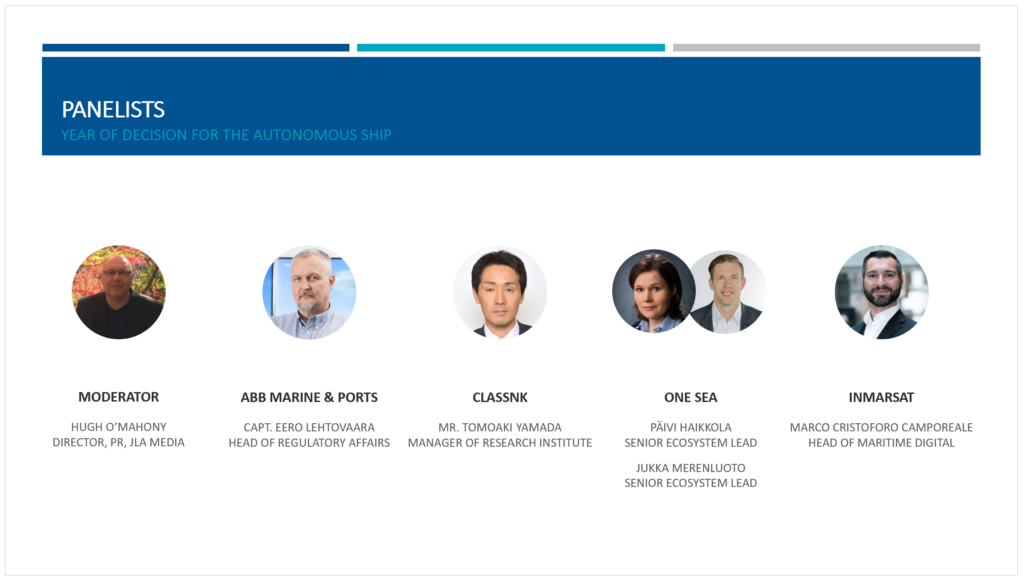Posted in Marine industry talk and Maritime PR
A compelling line up of speakers ensured a strong maritime press turn out for the JLA Press Briefing Webinar – the Year of decision for the Autonomous Ship on June 30th, with attendees online simultaneously in the US, Europe and Asia.
The virtual event was timely, given that 2020 is the year when the International Maritime Organization completes the first stage of its scoping exercise on the Autonomous Ship.
For the moment, IMO is focusing on current regulations and how they may be affected by the autonomous ship, rather than on developing new rules, but this is the point of departure for regulators. IMO clearly sees the autonomous ship as part of shipping’s future.
Five expert speakers explored the potential and challenges brought by the autonomous ship, with each offering insights into the pilot schemes underway but also the autonomous ship technologies already in operation.

The first to speak was Eero Lehtovaara, ABB Marine & Ports Head of Regulatory Affairs. ABB is one of the leading technology companies involved in autonomous ships, with Eero providing a focal point to develop understanding between technologists and regulators. Accordingly, his advocacy for autonomous ship technology was tempered by realism that its adoption would be gradual.
Next came Tomoaki Yamada, Manager of the ClassNK Research Institute, who offered an overview of ClassNK’s new guidelines on autonomous ships and insights into its work with NYK Line supporting an ‘Action Plan and Execution System’ proof of concept framework. An even broader overview was offered by Paivi Haikkola and Jukka Merenluoto of the One Sea autonomous ship industry alliance. However, very specific insights were given by Jukka into new tests to develop autonomous ship operations for fairways.
The autonomous ship wouldn’t be very autonomous without connectivity, and final speaker and Inmarsat Head of Digital Marco Cristoforo Camporeale offered clear guidance on the grades of connectivity required to match different degrees of autonomy.
A lively Q&A session was kicked off with the inevitable ‘Covid-19’ question, although panellists focused on the global pandemic as a driver of digital solutions rather than as a source for delay. However, it was acknowledged that technology funding may be an issue for the period ahead.
Other questions arising focused on what would really happen if an autonomous ship broke down, the role of those ashore in ship operations, how degrees of automation related to regulations and whether class societies were working collectively or in isolation. One questioner sought comment on whether the autonomous ship would remain a coastal phenomenon, at least until the late 2030s.
The Webinar was also enlivened by two polls in which 65% of the maritime media audience saw technology as a potential safety benefit for safety, while an astonishing two thirds also apparently believed the autonomous ship represented a job opportunity, rather than a threat.
The full motivations for this strength of feeling remains unclear and, ultimately, pressure of time meant that there were simply too many questions to be answered on-day. However, JLA Media moderator Hugh O’Mahony undertook to follow up with all outstanding questions submitted during the session, also taking the success of the session as a cue to hint that future JLA Media Webinars were not too far away.
For more information or to request a copy of the recording, please get in touch with one of the JLA team.
